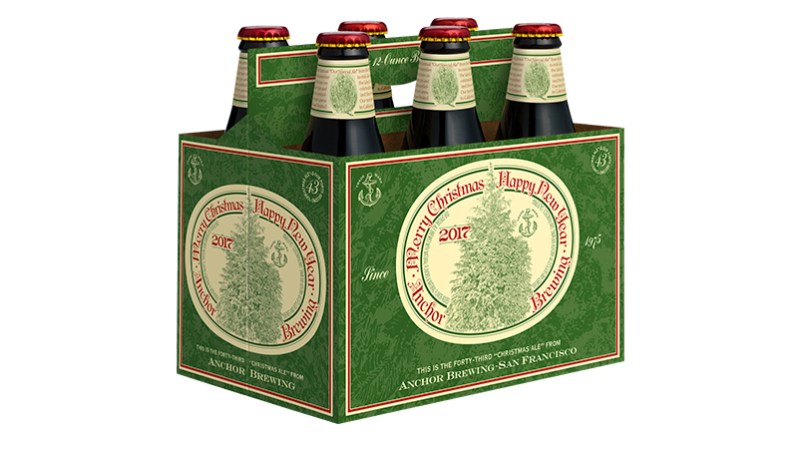Christmas may be over, but with all of the work and time that San Francisco’s Anchor Brewing Company has put into their annual Christmas Ale, it’s something to stock up on and celebrate year-round.
In 2017, Anchor released the 43rd iteration of the Anchor Christmas Ale. Each year, a new recipe is written, but the beer is always meant to provide a holiday celebration, says brewmaster Scott Ungermann. In addition to the beer inside, the label itself changes annually, highlighting a different tree.
The most recent iteration showcases the Santa Lucia fir, which can only found along the central California coast. The design comes courtesy of artist James Stitt, who has drawn the Christmas Ale labels since 1975. This, Ungermann says, not only helps to symbolize the winter solstice, but it also gives collectors something new to look for year after year.
Available from November and through January (there’s still time to get yours!), Christmas Ale is full of cacao, toffee, nuts, honey, and herbal spice flavors. The spice levels this year, however, are less than years past, allowing other ingredients to shine through, Ungermann says. Anchor also added more specialty malts, including some that were used for the very first time at the brewery. The exact ingredients are held close to the vests of just a few brewers.

“This year’s Christmas Ale has a strong malt profile that is enhanced with wintry spices,” Ungermann said. “This is the third year in a row that we peeled back the layers of spices, taking some ingredients out and making those remaining stand out even more.”
While you can drink it now, it is also highly encouraged to save some of the Christmas ale so that you can do a vertical tasting. Once you’ve collected a few years’ worth of ales, invite some friends over and pop them open to see how the spices have evolved over time.
Throughtout the years, the new recipes have increased the beer’s alcohol level, going from 5.5-percent ABV two years ago to-6.7 percent for the 2017 version. Anchor suggests settling in next to a fire to enjoy this Christmas Ale, as one might enjoy a holiday cocktail, or pouring next to a classic feast of roasted turkey (here’s your excuse to whip up another holiday meal before next December).


